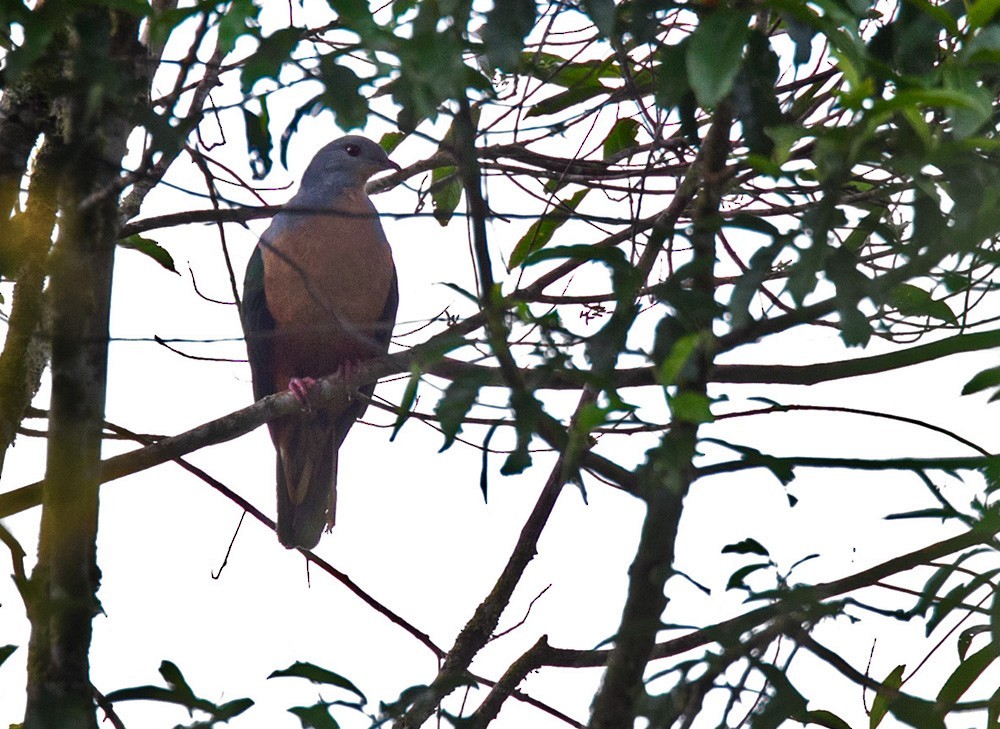Rufescent Imperial Pigeon
A species of Imperial pigeons Scientific name : Ducula chalconota Genus : Imperial pigeons
Rufescent Imperial Pigeon, A species of Imperial pigeons
Botanical name: Ducula chalconota
Genus: Imperial pigeons
Content
Description General Info
 Photo By Lars Petersson
Photo By Lars Petersson Description
The male rufescent imperial pigeon is 41–42 cm (16–17 in) long, and the female is 37–39 cm (15–15 in) long. It weighs about 613 g (21.6 oz). In the subspecies smaragdina, the head is slaty-grey. The back and wing coverts are metallic green, with bronzy and bluish reflections, and the flight feathers are darker and more bluish. The tail is blackish and has a blue gloss. The throat is cinnamon, and the breast is vinous. The belly and flanks are chestnut. The feet are red, the eye is reddish, and the beak is dark slate. The female is very similar to the male. The juvenile bird has a paler head and neck, and its breast is vaguely greyish. The subspecies chalconota has a reddish-purple iridescence on its mantle and back. 
Size
39 cm
General Info
Behavior
The rufescent imperial pigeon is found singly, sometimes in pairs. It often sits in the middle layers of the forest, and it does not leave the forest. Usually silent, it hums slowly and mournfully and also gives a low hoo and a hollow knock. Duetting has been observed. It eats figs and fruits. The breeding is unknown except that individuals in breeding condition have been collected in February and March. 
Distribution Area
This pigeon is endemic to New Guinea, found in the Tamrau, Arfak and Wandammen Mountains, the Central Range and the Huon Peninsula. Its habitat is primary montane forests at elevations of 1,100–2,500 m (3,600–8,200 ft). 
Species Status
The population is stable and does not have substantial threats, so the IUCN has assessed it as a least-concern species. 

 Photo By Lars Petersson
Photo By Lars Petersson Scientific Classification
Phylum
Chordates Class
Birds Order
Pigeons and doves Family
Dove Genus
Imperial pigeons Species
Rufescent Imperial Pigeon